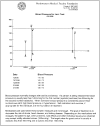Informing patients: a guide for providing patient health information
- PMID: 9824803
- PMCID: PMC61336
- DOI: 10.1136/jamia.1998.0050563
Informing patients: a guide for providing patient health information
Abstract
Objective: To understand and address patients' need for information surrounding ambulatory-care visits.
Design: The authors conducted two patient focus groups regarding patient education. The first covered general information needs of patients and the second explored their reactions to a computer-generated patient handout that was developed in response to the results of the first focus group and implemented in a clinic.
Results: Participants sought information about their health--generally after the encounter with their caregiver. They wanted a permanent record of personal health data and relevant educational information. Participants recommended that the information be concise, clear, and illustrated with graphics if appropriate. Receiving health-related information from their providers favorably affected the participants' trust in, relationship with, and confidence in their physicians. When given printouts with graphic trends depicting their responses to therapy, participants reported that they were more motivated to adhere to a treatment plan and were more satisfied with their care. Based on the results of the focus groups, we developed a set of attributes (P.A.T.I.E.N.T.) to guide the development of patient and consumer health information.
Conclusions: Patients participating in our focus groups felt that providing printed summary information to patients at the end of a clinic visit improves their understanding of their care, enhances their relationships with providers, improves their satisfaction with care, and motivates them to adhere to treatment plans. Further empirical studies are necessary to test their perceptions.
Figures



References
-
- Degner LF, Kristjanson LJ, Bowman D, et al. Information needs and decisional preferences in women with breast cancer. JAMA. 1997;277: 1485-92. - PubMed
-
- Quill TE, Brody H. Physician recommendations and patient autonomy: finding a balance between physician power and patient choice. Ann Intern Med. 1996;125: 763-9. - PubMed
-
- Laine C, Davidoff F. Patient-centered medicine: a professional evolution. JAMA. 1996;275: 152-6. - PubMed
-
- Barry MJ, Fowler FJJ, Mulley AGJ, Henderson JVJ, Wennberg JE. Patient reactions to a program designed to facilitate patient participation in treatment decisions for benign prostatic hyperplasia. Med Care. 1995;33: 771-82. - PubMed
Publication types
MeSH terms
Grants and funding
LinkOut - more resources
Full Text Sources
Other Literature Sources

